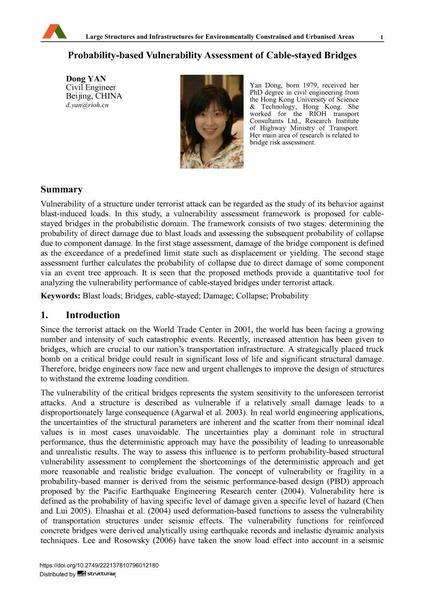Probability-based Vulnerability Assessment of Cable-stayed Bridges

|
|
|||||||||||
Bibliographic Details
| Author(s): |
Dong Yan
|
||||
|---|---|---|---|---|---|
| Medium: | conference paper | ||||
| Language(s): | English | ||||
| Conference: | IABSE Symposium: Large Structures and Infrastructures for Environmentally Constrained and Urbanised Areas, Venice, Italy, 22-24 September 2010 | ||||
| Published in: | IABSE Symposium Venice 2010 | ||||
|
|||||
| Page(s): | 124-125 | ||||
| Total no. of pages: | 8 | ||||
| Year: | 2010 | ||||
| DOI: | 10.2749/222137810796012180 | ||||
| Abstract: |
Vulnerability of a structure under terrorist attack can be regarded as the study of its behavior against blast-induced loads. In this study, a vulnerability assessment framework is proposed for cablestayed bridges in the probabilistic domain. The framework consists of two stages: determining the probability of direct damage due to blast loads and assessing the subsequent probability of collapse due to component damage. In the first stage assessment, damage of the bridge component is defined as the exceedance of a predefined limit state such as displacement or yielding. The second stage assessment further calculates the probability of collapse due to direct damage of some component via an event tree approach. It is seen that the proposed methods provide a quantitative tool for analyzing the vulnerability performance of cable-stayed bridges under terrorist attack. |
||||
| Keywords: |
bridges damage collapse probability blast loads cable-stayed
|
||||

